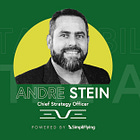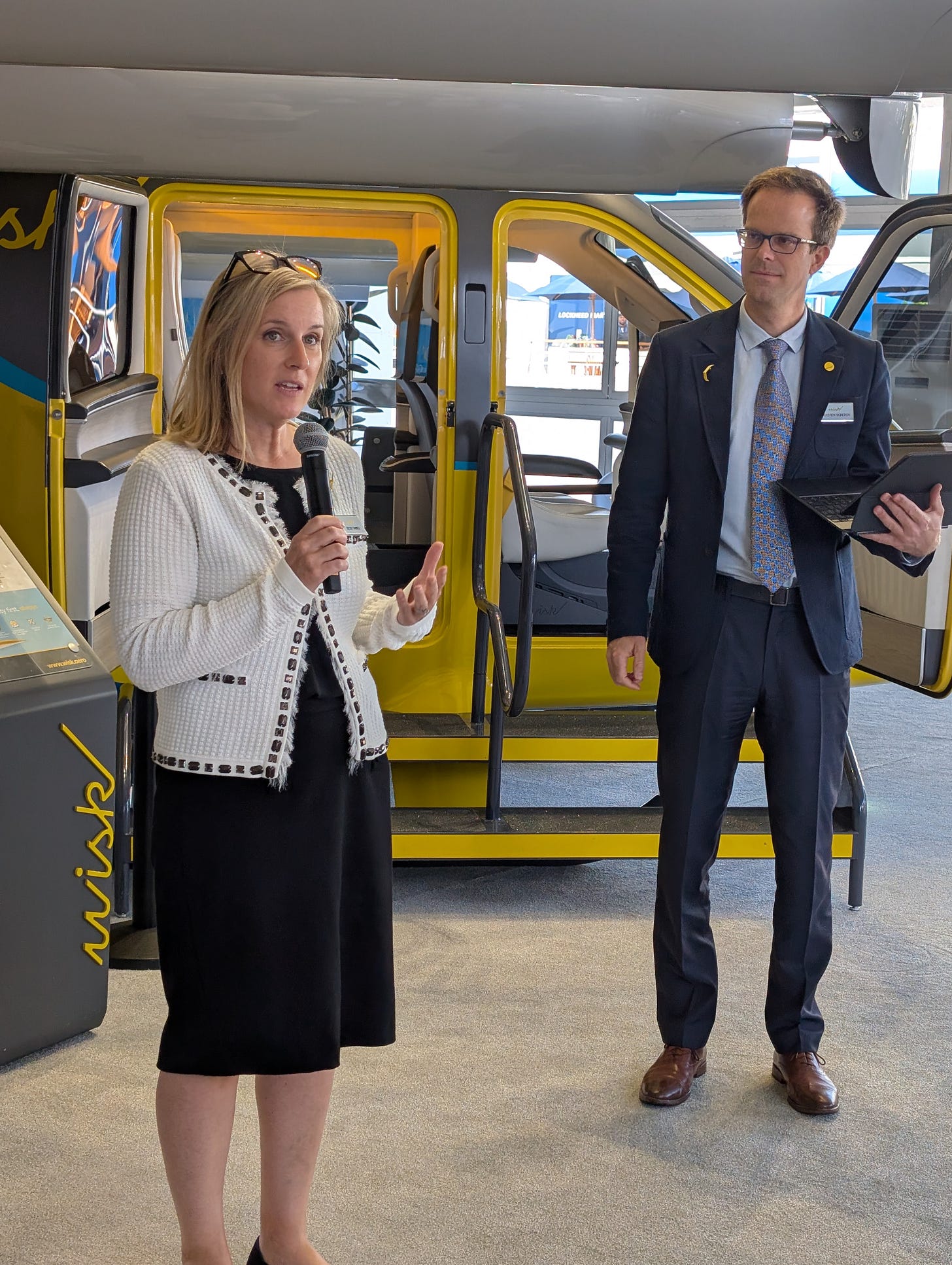The eVTOL reality check: Bold promises vs. hard truths at the Paris Air Show
At Paris Air Show 2025, eVTOL leaders showcased real progress, but the path to profitability remains clouded by certification challenges and cost realities.
Urban air mobility (UAM) was in the spotlight at the 2025 Paris Air Show, where leading electric vertical take-off and landing (eVTOL) developers Wisk Aero and Eve Air Mobility showcased refined aircraft, bold roadmaps, and divergent philosophies on scaling this still-nascent market.
The overall message was that the transition from concept to commercial planning is underway.
But behind the prototypes and press conferences, questions linger: On economics, certification timelines, and whether autonomy or pilot-led models will win public trust.
Projections multiply, but so do questions
Eve Air Mobility used the show to launch its inaugural Global Market Outlook, predicting a future fleet of 30,000 eVTOLs transporting 3 billion passengers by 2045, and generating $280 billion in revenue. The company cited urban congestion, population growth, and decarbonisation trends as primary demand drivers, calling UAM "a major shift in how people will move and live."
It's a bold vision, but not a new one. Several grand-sounding reports and analyses have been published over the years, similar to this one. Perhaps they will come true. But they rely on fairly aggressive assumptions around infrastructure build-out, battery improvements, regulatory streamlining, large-scale production to produce tens of thousands of aircraft, and — critically — affordable pricing.
Here, the claim that eVTOLs will match the cost of an UberX is repeatedly made at industry events — the CEO of British electric air taxi company Vertical Aerospace said something similar at SXSW London in early June. For now, though, it remains more of a marketing mantra than a marketing reality.
Wisk: Autonomy as the future (and present)
Wisk Aero, a Boeing subsidiary, made arguably the most technically ambitious pitch at the show. It's Gen 6 aircraft, unveiled alongside detailed certification and testing updates, is designed for fully autonomous passenger flight, with no pilot on board. Instead, flights will be overseen by ground-based operators via dedicated control stations.
"This aeroplane is fully autonomous," said CEO Sebastian Vigneron. "There is no pilot on board, but there is still a human in the loop on the ground." He explained that autonomy not only brings safety and more efficiency, but it also allows the company to scale.
According to Vigneron, Wisk's aircraft features triple-redundant fly-by-wire systems, "no single point of failure that can be catastrophic," and failure rates of "no more than one in a billion flight hours."
The company targets safety standards equivalent to FAA Part 25 requirements, the same threshold applied to modern commercial aircraft. Wisk is currently undergoing safety-of-flight testing in California and is "weeks or months" away from its first test flight, Vigneron said.
Wisk also confirmed that it will initially act as an operator, flying its own aircraft like an airline to simplify early deployment. "We're going to operate the aeroplane at the very beginning because it's a brand new aeroplane, it's fully autonomous, it's not straightforward to operate because the pilot and the supervisor is on the ground," Vigneron said. "We will definitely have to partner with airlines and new modes of transportation as well."
Wisk announced Miami as a launch market, with other target markets including Los Angeles, Houston, and Brisbane, with a view to the 2032 Olympics. The company has also unveiled partnerships with Japan's Kaga City and Japan Airlines for testing autonomous aerial mobility operations.
Eve: Piloted and ecosystem-focused
Eve, spun out of Embraer, presented itself as a practical realist. Its first-gen aircraft, set for piloted operations by Q4 2027, is currently progressing through ground tests. Flight testing is expected to begin this summer.
"At Eve, we're not aiming to be first to certification; our true objective is to provide the best solution for our customers," said CEO Johann Bordais. "Our rigorous test program isn't about rushing to deadlines, it's about methodical precision that ultimately accelerates our certification path."
Eve unveiled several design refinements at the show, including:
Wheeled landing gear with optional lightweight skids for enhanced ground manoeuvrability
A full-flex cabin design allowing up to 4 passengers to quickly convert between passenger and cargo configurations
Fixed-pitch lifters with a patented four-blade design that autonomously align with pylons to reduce drag
An intuitive, four-axis sidestick-only cockpit developed with Garmin and Crouzet
More significantly, Eve emphasised its TechCare services suite, which bundles pilot training, MRO, fleet operations, battery logistics, and air traffic management under a single monthly fee.
Beta Technologies: A real flight
Meanwhile, Beta Technologies achieved a notable milestone: its Alia CX300 flew at the Paris Air Show, as part of a ‘grand tour’ of Europe, leading off the first afternoon’s flight display.
The company's strategy prioritises conventional takeoff and landing (eCTOL) initially, viewing it as a more realistic path to certification and revenue, with eVTOL certification coming as step two. Beta has also been developing a charging infrastructure, seeing it as another revenue source.
CEO Kyle Clark told Vertical Magazine that the aircraft used just $7 of electricity on a recent flight route, whereas a traditional jet would burn hundreds of dollars in fuel.
Beta has also signed a training and route validation MoU with Republic Airways, aiming to enter service later this year.
Industry optimism vs investor reality
While the sector is rich in public partnerships, memoranda of understanding, and media-friendly demos, it also has detractors.
That was underscored several weeks before the show by a short-seller report from Culper Research, which accused Archer Aviation, one of the best-funded electric air taxi companies, of "systematically misleading" investors over its eVTOL progress.
Culper alleged that Archer has failed to provide FAA-compliant flight footage despite public claims and questioned the timing of its marketing push, coinciding with high-profile media appearances by CEO Adam Goldstein. Archer denied the claims, describing Culper as "not a credible institution," and blamed the attack on short-selling motives.
Whether justified or not, the fundamental question remains whether companies can deliver on their ambitious timelines and cost projections.
Final approach?
The 2025 Paris Air Show marks a turning point: the conversation is no longer about whether eVTOLs are possible, but whether the business models as sold to airlines, investors and the public can hold up in the real world.
The technology is maturing. The aircraft are real. But so are the costs, the certification hurdles, and the infrastructure dependencies. The future of eVTOLs may well arrive, just not on the timeline or ticket price many have promised.
Meanwhile, alternative approaches are gaining traction. Companies like Electra, featured in our new book "Sustainability in the Air: Volume Two," are pursuing hybrid-electric ultra-short takeoff and landing aircraft that promise many of the same benefits: Point-to-point connectivity, reduced emissions, access to smaller airfields, but with potentially lower costs and fewer certification hurdles than their vertical-lift counterparts.
With over 2,200 orders and certification under existing Part 23 regulations rather than new eVTOL frameworks, such models may offer a more pragmatic path to transforming regional and commuter aviation.
As a result, the question for the eVTOL industry is whether the unique advantages of vertical flight justify the complexity and cost, or whether the market will ultimately favour simpler, more conventional solutions that achieve similar outcomes.







